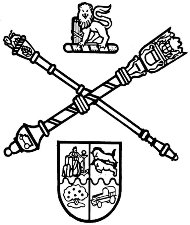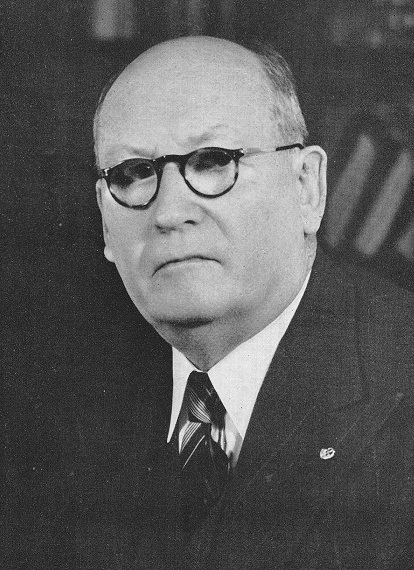|
Group Areas Development Act, 1955
The Group Areas Development Act, 1955 (Act No. 69 of 1955; subsequently renamed the Community Development Act, 1955), formed part of the apartheid system of racial segregation in South Africa. It was enacted to help effect the purpose of the Group Areas Act Group Areas Act was the title of three acts of the Parliament of South Africa enacted under the apartheid government of South Africa. The acts assigned racial groups to different residential and business sections in urban areas in a system of ... of 1950, namely to exclude non-Whites from living in the most developed areas, which were restricted to Whites. It was later replaced by the Community Development Act of 1966. Content of the Act The following is a brief description of the sections of the Natives Resettlement Act: ;Section 1 Defined the meanings of common words within the Act. ;Section 2 Defined the name of the Board as the Group Areas Development Board and in the legal form of a body corporate. It would also be ... [...More Info...] [...Related Items...] OR: [Wikipedia] [Google] [Baidu] |
Parliament Of South Africa
The Parliament of the Republic of South Africa is South Africa's legislature; under the present Constitution of South Africa, the bicameral Parliament comprises a National Assembly and a National Council of Provinces. The current twenty-seventh Parliament was first convened on 22 May 2019. From 1910 to 1994, members of Parliament were elected chiefly by the South African white minority. The first elections with universal suffrage were held in 1994. Both chambers held their meetings in the Houses of Parliament, Cape Town that were built 1875–1884. A fire broke out within the buildings in early January 2022, destroying the session room of the National Assembly. The National Assembly will temporarily meet at the Good Hope Chamber. History Before 1910 The predecessor of the Parliament of South Africa, before the 1910 Union of South Africa, was the bicameral Parliament of the Cape of Good Hope. This was composed of the House of Assembly (the lower house) and the Legis ... [...More Info...] [...Related Items...] OR: [Wikipedia] [Google] [Baidu] |
Minister Of The Interior (South Africa)
The Minister of Home Affairs is the minister in the Cabinet of South Africa with responsibility for the Department of Home Affairs. This position is currently filled by Aaron Motsoaledi, who was appointed by President Cyril Ramaphosa on 29 May 2019. The position includes responsibility for immigration, refugee and asylum policy, for the civil registry, and for the issuing of identity documents and passports. List of Past Ministers Minister of the Interior Affairs, 1910–1984 Minister of Internal Affairs, 1984–1994 Minister of Home Affairs, 1994–present {, class="wikitable" !Name !Portrait !Term !Party !President , - , Mangosuthu Buthelezi , , 10 May 1994 – 13 July 2004 , IFP , Nelson Mandela ( Government of National Unity) , - , Nosiviwe Mapisa-Nqakula , , 13 July 2004 – 21 April 2009 , ANC , Thabo Mbeki Kgalema Motlanthe (after Mbeki resigned from office) , - , Nkosazana Dlamini-Zuma , , 22 April 2009 – 3 October 2012 , ANC , rowspan=5 , Jacob Zum ... [...More Info...] [...Related Items...] OR: [Wikipedia] [Google] [Baidu] |
Community Development Act, 1966
The Group Areas Development Act, 1955 (Act No. 69 of 1955; subsequently renamed the Community Development Act, 1955), formed part of the apartheid system of racial segregation in South Africa. It was enacted to help effect the purpose of the Group Areas Act Group Areas Act was the title of three acts of the Parliament of South Africa enacted under the apartheid government of South Africa. The acts assigned racial groups to different residential and business sections in urban areas in a system of ... of 1950, namely to exclude non-Whites from living in the most developed areas, which were restricted to Whites. It was later replaced by the Community Development Act of 1966. Content of the Act The following is a brief description of the sections of the Natives Resettlement Act: ;Section 1 Defined the meanings of common words within the Act. ;Section 2 Defined the name of the Board as the Group Areas Development Board and in the legal form of a body corporate. It would also be ... [...More Info...] [...Related Items...] OR: [Wikipedia] [Google] [Baidu] |
Group Areas Act, 1950
Group Areas Act was the title of three acts of the Parliament of South Africa enacted under the apartheid government of South Africa. The acts assigned racial groups to different residential and business sections in urban areas in a system of urban apartheid. An effect of the law was to exclude people of color from living in the most developed areas, which were restricted to Whites ( Sea Point, Claremont). It required many people of color to commute large distances from their homes to be able to work. The law led to people of color being forcibly removed for living in the "wrong" areas. The majority that was people of color, were given much smaller areas (e.g., Tongaat, Grassy Park) to live in than the white minority who owned most of the country. Pass Laws required people of color to carry pass books and later "reference books", similar to passports, to enter the "white" parts of the country. The first Group Areas Act, the ''Group Areas Act, 1950'' was promulgated on 7 Jul ... [...More Info...] [...Related Items...] OR: [Wikipedia] [Google] [Baidu] |
Apartheid
Apartheid (, especially South African English: , ; , "aparthood") was a system of institutionalised racial segregation that existed in South Africa and South West Africa (now Namibia) from 1948 to the early 1990s. Apartheid was characterised by an authoritarian political culture based on ''baasskap'' (boss-hood or boss-ship), which ensured that South Africa was dominated politically, socially, and economically by the nation's Minoritarianism, minority White South Africans, white population. According to this system of social stratification, white citizens had the highest status, followed by Indian South Africans, Indians and Coloureds, then black Africans. The economic legacy and social effects of apartheid continue to the present day. Broadly speaking, apartheid was delineated into ''petty apartheid'', which entailed the segregation of public facilities and social events, and ''grand apartheid'', which dictated housing and employment opportunities by race. The f ... [...More Info...] [...Related Items...] OR: [Wikipedia] [Google] [Baidu] |
South Africa
South Africa, officially the Republic of South Africa (RSA), is the southernmost country in Africa. It is bounded to the south by of coastline that stretch along the South Atlantic and Indian Oceans; to the north by the neighbouring countries of Namibia, Botswana, and Zimbabwe; and to the east and northeast by Mozambique and Eswatini. It also completely enclaves the country Lesotho. It is the southernmost country on the mainland of the Old World, and the second-most populous country located entirely south of the equator, after Tanzania. South Africa is a biodiversity hotspot, with unique biomes, plant and animal life. With over 60 million people, the country is the world's 24th-most populous nation and covers an area of . South Africa has three capital cities, with the executive, judicial and legislative branches of government based in Pretoria, Bloemfontein, and Cape Town respectively. The largest city is Johannesburg. About 80% of the population are Black Sou ... [...More Info...] [...Related Items...] OR: [Wikipedia] [Google] [Baidu] |
Group Areas Act
Group Areas Act was the title of three acts of the Parliament of South Africa enacted under the apartheid government of South Africa. The acts assigned racial groups to different residential and business sections in urban areas in a system of urban apartheid. An effect of the law was to exclude people of color from living in the most developed areas, which were restricted to Whites ( Sea Point, Claremont). It required many people of color to commute large distances from their homes to be able to work. The law led to people of color being forcibly removed for living in the "wrong" areas. The majority that was people of color, were given much smaller areas (e.g., Tongaat, Grassy Park) to live in than the white minority who owned most of the country. Pass Laws required people of color to carry pass books and later "reference books", similar to passports, to enter the "white" parts of the country. The first Group Areas Act, the ''Group Areas Act, 1950'' was promulgated on 7 Jul ... [...More Info...] [...Related Items...] OR: [Wikipedia] [Google] [Baidu] |
Apartheid Laws In South Africa
Apartheid (, especially South African English: , ; , "aparthood") was a system of institutionalised racial segregation that existed in South Africa and South West Africa (now Namibia) from 1948 to the early 1990s. Apartheid was characterised by an authoritarian political culture based on '' baasskap'' (boss-hood or boss-ship), which ensured that South Africa was dominated politically, socially, and economically by the nation's minority white population. According to this system of social stratification, white citizens had the highest status, followed by Indians and Coloureds, then black Africans. The economic legacy and social effects of apartheid continue to the present day. Broadly speaking, apartheid was delineated into ''petty apartheid'', which entailed the segregation of public facilities and social events, and ''grand apartheid'', which dictated housing and employment opportunities by race. The first apartheid law was the Prohibition of Mixed Marriages A ... [...More Info...] [...Related Items...] OR: [Wikipedia] [Google] [Baidu] |




